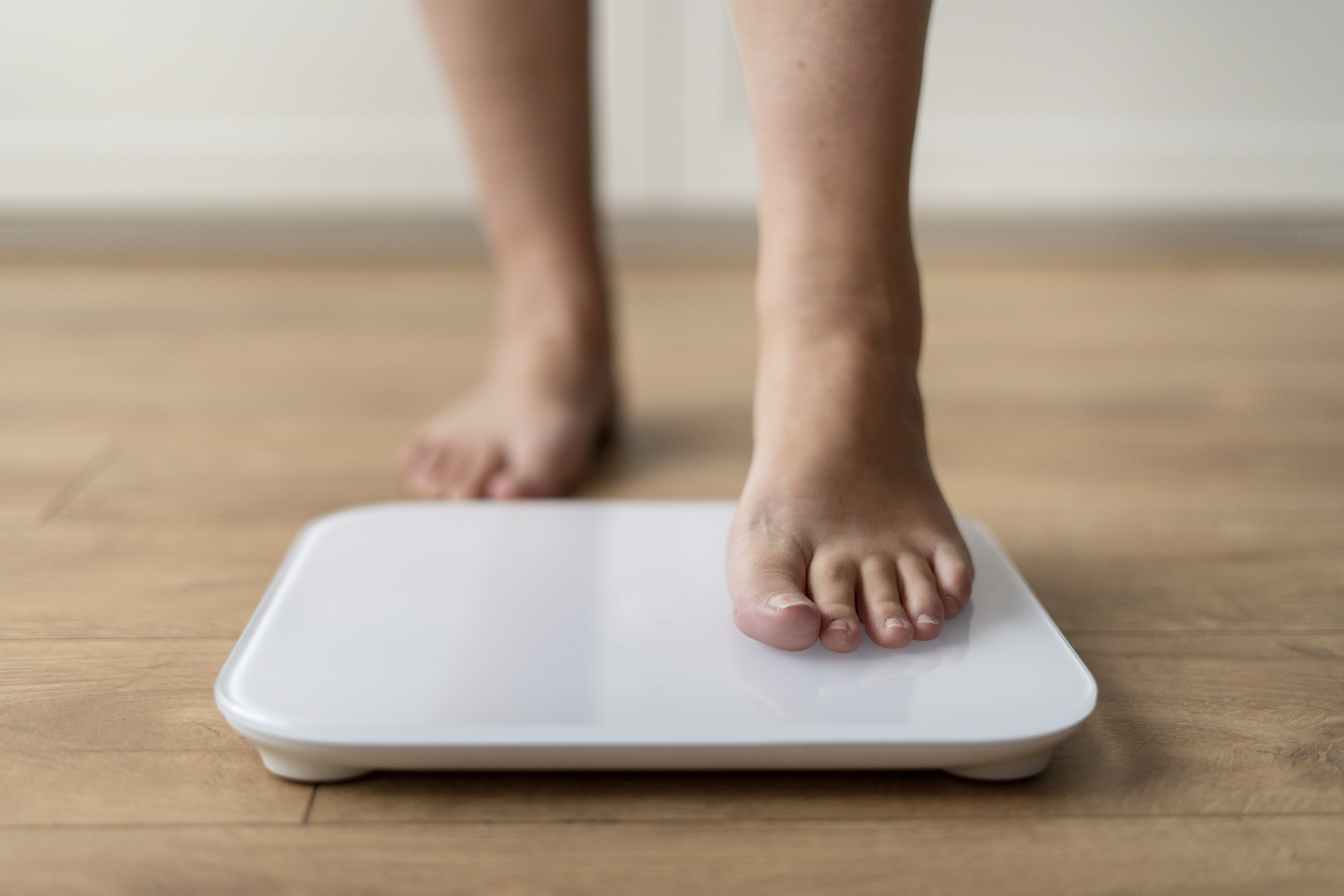Table of Contents
- 10 Habits To Improve Heart Health
- #1: Eat Healthy Fats
- #2: Making The Heart Work Smarter
- #3: Unlocking The Power of Sleep
- #4: Slicing Away Stress
- #5: Engaging In Exercise
- #6: Effects Of Quitting Smoking and Alcohol
- #7: Your Heart’s Report Card: Which Tests Matter
- #8: Keep Yourself Hydrated
- #9: Losing Bodyweight for Obese Adults
- #10: Top Three Minerals for Heart Health
- The Bottom Line
There’s an age-old saying that the way to a man’s heart is through his stomach. Placing your utmost focus on the organ that beats over 2.5 billion times for the average Indian male should be a wakeup call for Indians in their 30s and 40s. The overwhelming media coverage on celebrities dying in the gym and elsewhere only brings forth more questions. If fit and body-conscious celebrities dying from heart attacks are on the rise every time you open social media then where does the average Indian, trying to make ends meet, fall in the fitness category?
While heart health is not solely about avoiding disease, it's also about having the enthusiasm to function better. Moving with better energy leading to an elevated quality of life must be a concern for the present generation. From the shared experience of coaching thousands of clients at MyHealthBuddy, here are ten sustainable practices that can guide you to having a healthy heart.
10 Habits To Improve Heart Health
#1: Eat Healthy Fats
One such healthy fats are unsaturated fats. Including these into your meals will lower LDL (a.k.a bad cholesterol), support brain function, reduce inflammation and improve blood clotting A combination of traditional cooking oils (olive oil, mustard oil, groundnut oil or sunflower oil) along with a handful of nuts (peanuts, walnut or almonds) will supply you with most of the unsaturated fats you need. Set aside 20% of your total calories for unsaturated fats.
Saturated fats are healthy as long as the intake is limited to not more than 10% of daily calories. Anything over this limit, increases the risk of higher levels of LDL which deposits cholesterol in the blood vessels. Saturated fats are found in ghee, butter, full fat dairy products and egg yolk.
Transfats are unhealthy fats. Found in packaged baked goods and fried fast foods, these are the double-edged swords of fats as they increase LDL and lower HDL. Transfats must be avoided at all costs.
#2: Making The Heart Work Smarter
In the beginning of 2010, World Health Organization in its publication titled ‘Global Recommendations on Physical Activity for Health' stated that 150 minutes of moderate intensity aerobic physical activity (brisk walking, cycling, swimming) or 75 minutes of vigorous activity per week was needed for minimum cardiovascular health.
Resting heart rate (RHR) offers a sneak peek into one’s heart health. It is the number of times your heart beats in a minute just after you wake up from a good night’s sleep. The lower it is, the stronger your heart will be. Ever wondered how endurance athletes and fitness enthusiasts are able to commit to a physical activity for extended periods of time? The answer lies in the below equation.
Cardiac Output = Stroke Volume x Number of Heartbeats
If cardiac output has to be high, either the stroke volume or the number of heartbeats must increase. The problem with increasing the number of heartbeats is that it cannot be sustained in the long term. Stroke volume can be improved though. Spend 150 to 300 minutes on any physical activity that’s light enough for you to maintain a conversation without going breathless. This strengthens your heart to pump with a greater force thereby increasing the cardiac output. This is exactly why elite marathoners have a heart rate of 35 to 40 while the average human being has about 72 beats per minute. The higher your heart beats during a short training session, the more efficient it tries to be in delivering blood to all parts of the body by increasing its contraction. Imagine having your heart upgraded to a better pump. That's the engine driving you to move without fatigue.
One of the training models that help you get to that peak performance is by starting out the Run - Walk method which consists of alternating intervals of running and walking. Particularly suited for beginners, this method helps build endurance without crossing into exhaustion.
As for those who do not want to lace on their running shoes, High Intensity Interval Training (HIIT) is a good alternative to the Run - Walk method. Here, any workout done with short bursts of high intensity (80 - 90% of maximum heart rate) followed by recovery periods improves cardiovascular fitness and improves muscular endurance.
In the 1990s, the Tabata model of exercise was developed. What began as a training method for Japanese Olympic speed skaters, now finds its way into the regimes for many fitness enthusiasts. Here exercises are done with a work to rest ratio of 20 seconds of all-out exercise and 10 seconds of rest. Each exercise lasts 8 rounds or 4 minutes each. This maximizes both aerobic and anaerobic capacity in minimal time.
#3: Unlocking The Power of Sleep
Sleep is one of the most under-utilized ammo in our stockpile that helps maintain good heart health. Getting that 7-8 hours of well deserved shut eye is crucial for mental clarity and recovery. During a state of deep sleep, our blood pressure naturally drops thereby making it easier for the heart to pump blood. Inadequate sleep is often linked to hypertension, arrhythmias and type 2 diabetes which strains the heart. Sleep also affects the regulation of the appetite hormone ghrelin. Less sleep spikes ghrelin which raises hunger levels making you eat more and leading to obesity.
Tips To Get Your Sleep Right:
● Maintain a consistent sleep schedule on most days of the week.
● Avoid caffeine close to bedtime.
● Keep the lights at home dimmed as the day ends.
● Limit screen time before you hit the bed.
#4: Slicing Away Stress
Over 50% of urban Indians have experienced stress at alarming levels that impacts daily lives. The hypothalamic-pituitary-adrenal (HPA) axis is responsible for regulating the body’s stress control system. Cortisol is one stress hormone that reacts instinctively by increasing blood pressure which may lead to heart attacks. In the long run, such activities reduce the baseline blood pressure too. Meditation and being mindful suppresses anxiety which is linked to heart problems.
#5: Engaging In Exercise
While stress from the work environment is beyond control, dedicating a time of the day for activities like cardio or strength training lowers cortisol levels and resting heart rate allowing your cardiovascular system to operate more efficiently. In addition to strengthening bones and muscles, exercise releases the feel-good hormones endorphins and dopamine which keeps the blood vessels elastic and able to transport a higher volume of blood. The effects can last for up to 6 hours post exercise and over time make blood vessels permanently elastic. Exercise also improves HDL, lowers LDL and triglycerides.
#6: Effects Of Quitting Smoking and Alcohol
Check out the timeline of the effects on the human body of being alcohol and nicotine-free:
● In 20 minutes, the heart rate and blood pressure return to normal.
● In 1 hour, carbon monoxide levels in the bloodstream start to reduce.
● In 12 hours, the risk of heart stress decreases.
● In 24 hours, blood pressure and heart rate stabilize.
● In 48 hours, oxygen delivery to heart muscle improves.
● In 72 hours, breathing returns to normal and energy levels begin to rise.
● In 1 week, lowers early atherosclerosis risk.
● In 3 months, exercise becomes easier
● In 9 months, the risk of clot formation leading to heart attacks reduces.
● In 1 year, risk of coronary heart disease cuts down by half compared to a smoker/drinker.
#7: Your Heart’s Report Card: Which Tests Matter
Just like a pilot running an airplane’s diagnostics before take off, it is vital that the human heart needs the same. Though the given values vary slightly for age and other medical conditions, it is ideal to keep these values in check.
A list of chemical tests that can be done to ensure good heart health:
● Total cholesterol below 200 mg/dL
● HDL cholesterol above 50 mg/dL for men and 60 mg/dL for women. HDL absorbs cholesterol from the bloodstream and transports it to the liver where it is removed from the body.
● LDL cholesterol should not exceed 100 mg/dL for the average person and those with diabetes below 70 mg/dL. LDL carries cholesterol to the cells and too much of it leads to deposition in the arteries.
● Triglycerides should not exceed 150 mg/dL. They act as a source of energy for the body but high levels can pose a risk to the heart.
Non-Invasive Tests to Check Your Heart Health:
The next time you decide to spend hours on the track or in the gym, make sure to get these diagnostics done and dusted.
● Electrocardiogram (ECG) helps identify irregular heartbeats and potentially any issues leading to heart attacks.
● Echocardiogram or the echo test helps analyze the heart’s structure and valves for physical abnormalities. Any congenital heart disorders will also be picked up by this test.
● In Treadmill Stress Test, the subject undergoes a physical exertion to know how the heart behaves under a load usually on a treadmill or a stationary bike.
#8: Keep Yourself Hydrated
Adequate water intake remains one of the simplest ways to take care of your heart. Drinking enough water reduces blood coagulation. In patients having atherosclerosis, consuming less water can also lead to angina pectoris which is a chest pain that occurs when the heart muscle is not supplied with enough oxygen-rich blood. Though individual needs may vary based on activity level and climate, the general guideline is to drink 35 ml of water intake for every kilogram of bodyweight.
On the contrary, overhydration can lead to hyponatremia where the body falls into dangerously low sodium levels. Therefore, maintaining a balance is the key.
#9: Losing Bodyweight for Obese Adults
For an obese individual, losing 10% of body weight can bring down risk of non-fatal heart attacks by 50%. These results are particularly evident in lowered blood pressure and better levels of total cholesterol, triglycerides and LDL. The probability of heart failures decreases even further when dieting is coupled with physical activity.
#10: Top Three Minerals for Heart Health
Research has shown that magnesium, potassium and vitamin D stand out as the most essential minerals for heart health
● Magnesium is essential to stabilize the heart’s electrical system as it is used for proper electrical signaling in the heart muscle cells. It also helps the heart muscle fibers to relax after each contraction. Magnesium-rich foods include pumpkin seeds, almonds, spinach, dark beans and dark chocolate.
● Potassium plays a vital role in maintaining blood pressure by helping the kidneys excrete the high sodium levels in the bloodstream. Baked potato, bananas, avocado and lentils are high in potassium.
● Vitamin D is another mineral that supports the heart by being responsible for its muscle and vessel strength. A lesser-known fact is that vitamin D has shown to increase arterial collateralization whereby new blood vessels develop to bypass existing arteries that have been narrowed or blocked. For the general population unable to meet their vitamin D demands from the sun, resorting to vitamin D supplements is the next best thing. Naturally occurring sources of this mineral are found in fatty fish and egg yolk.
The Bottom Line
Contrary to placing all your cards on a couple of the above mentioned points, adopting a holistic approach would work well to secure your heart health. The time is now and the place is here. So, start with one or two habits without delay and observe that small consistent actions everyday can do wonders for your longevity. After all, if you take care of your heart then your heart will take care of you.



